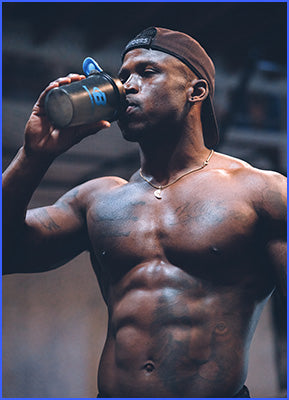Blitz News Digest
Stay updated with the latest trends and insights.
Muscle Drama: The Gains and Pains of Bodybuilding
Discover the highs and lows of bodybuilding in Muscle Drama—uncover secrets to gains, face the pains, and transform your fitness journey today!
The Science Behind Muscle Gains: Understanding Hypertrophy
The process of muscle growth, known as hypertrophy, is rooted in a complex interplay of physiological factors. When you engage in resistance training, your muscle fibers experience microscopic tears. In response, the body activates its repair mechanisms, leading to the synthesis of new proteins that increase muscle size. There are two primary types of hypertrophy: myofibrillar and sarcoplasmic. Myofibrillar hypertrophy focuses on increasing the density and strength of muscle fibers, while sarcoplasmic hypertrophy involves an increase in the volume of the muscle's energy-storing substances.
To maximize hypertrophy, several principles should guide your training regimen. Firstly, incorporating progressive overload is essential; you must continually challenge your muscles by increasing weight, intensity, or volume over time. Secondly, adequate nutrition, particularly the consumption of protein, plays a critical role. Nutrients provide the building blocks needed for muscle repair and growth. Lastly, allow sufficient recovery time between workouts, as muscles need time to repair and grow stronger. By understanding and harnessing these principles, individuals can optimize their training for effective muscle gains.

Overcoming Setbacks: Common Injuries in Bodybuilding and How to Prevent Them
Bodybuilding is a physically demanding activity that can lead to various injuries, ranging from minor strains to more significant ailments. Common injuries in bodybuilding include shoulder impingements, lower back pain, and knee injuries. These setbacks can not only derail your fitness goals but can also be discouraging. It's crucial to understand the underlying causes of these injuries to effectively prevent them. Poor form, inadequate warm-ups, and pushing beyond personal limits are often major culprits that lead to injury during training.
To reduce the risk of injury, bodybuilders should implement a range of preventative measures. Begin by ensuring proper warm-up routines that prepare your muscles and joints for the strains of lifting. Focus on strengthening supporting muscles, particularly for regions like the shoulders and back, to create better stability during lifts. Additionally, consider incorporating rest days into your training regimen to allow your body to recover and heal. Remember, consistency in proper technique and listening to your body can make a significant difference in preventing these injuries, allowing you to achieve your bodybuilding goals effectively.
Is Bodybuilding Worth the Pain? The Mental and Physical Costs of Pursuing Gains
Bodybuilding is often viewed through the lens of physical transformation and the pursuit of aesthetic gains. However, the journey to achieving a well-defined physique comes with its share of mental and physical costs. The training routines can be grueling, demanding hours spent in the gym lifting heavy weights, adhering to strict nutrition plans, and constantly pushing one’s body to its limits. This can lead to challenges such as fatigue, injury, and a potential decline in mental well-being. Many bodybuilders experience feelings of isolation as they dedicate significant time towards their training, often sacrificing social engagements and leisurely activities that detract from their goals.
Despite these challenges, the question Is bodybuilding worth the pain? lingers in the minds of many. The answer lies in the individual’s dedication and the psychological rewards that often accompany the struggle. Bodybuilding can foster a sense of discipline, resilience, and an increased body image that contributes positively to one’s mental health. Furthermore, the community aspect of bodybuilding, where individuals come together to share their journeys, can provide a support system that mitigates feelings of loneliness. Ultimately, while the cost may be high, the gains—both physical and mental—can be profoundly transformative, making the endeavor worthwhile for those who are truly passionate about the sport.